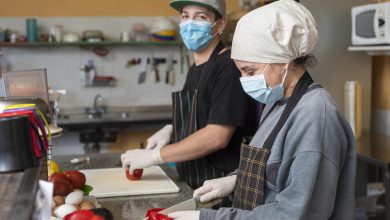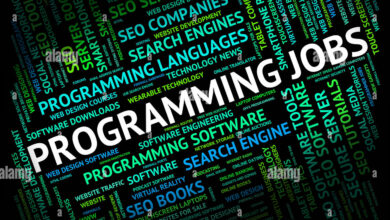The Role of Technology in Remote Food Jobs

Technology has become a cornerstone for remote work, enabling industries to operate smoothly and efficiently from any location. In the food industry, technology plays an essential role in allowing professionals to work remotely, from food scientists and nutritionists to recipe developers, food bloggers, and customer service agents. Whether it’s through communication tools, digital analytics, or virtual kitchens, technology empowers remote food jobs to thrive in today’s digital landscape. Here’s a closer look at how technology is transforming remote food jobs, the tools that make it possible, and the benefits it brings to the industry.
1. Streamlining Communication and Collaboration
Effective communication is vital in any industry, but it’s especially important in the food industry, where collaboration among teams is necessary for product development, marketing, and customer service. Technology has provided numerous tools that make communication seamless, even for remote teams spread across different locations.
Top Communication Tools for Remote Food Jobs:
- Zoom and Microsoft Teams: These platforms allow video conferencing for team meetings, client consultations, and virtual events. Food professionals can conduct remote consultations with clients, hold recipe planning meetings, or even conduct virtual taste tests.
- Slack: Slack provides a chat-based workspace where remote teams can stay connected throughout the day. Teams can create channels for specific projects, share updates, and even use video or voice calls within the app.
- Asana and Trello: Project management tools like Asana and Trello help remote food teams track project progress, set deadlines, assign tasks, and streamline workflows.
These communication tools foster collaboration across all aspects of the food industry, from recipe development to quality assurance and marketing campaigns.
2. Digital Platforms for Recipe Development and Sharing
Recipe development, testing, and sharing are fundamental tasks in the food industry. Digital tools have made it easier for recipe developers, bloggers, and chefs to create, share, and receive feedback on their culinary creations from anywhere.
Recipe Development and Sharing Tools:
- Google Workspace: Google Docs and Google Sheets are invaluable for recipe developers who want to collaborate with team members on ingredient lists, instructions, and nutritional data.
- Recipe Sharing Platforms: Websites like Whisk, BigOven, and Paprika allow food professionals to create and share recipes, manage digital cookbooks, and reach a larger audience.
- Food Blogging Platforms: WordPress and Squarespace are popular platforms for food bloggers, making it easy to publish recipes, share stories, and connect with readers. Bloggers can create websites that feature recipes, cooking tips, and food-related content, all managed remotely.
With these tools, remote recipe developers and food bloggers can easily organize and share their work, reaching audiences worldwide from their home kitchens.
3. Data Analytics for Food Marketing and Consumer Insights
Understanding consumer preferences is crucial in the food industry, and data analytics technology provides valuable insights into customer behaviour and market trends. Technology allows remote food marketers and data analysts to access these insights from anywhere, enabling them to make data-driven decisions.
Analytics Tools for Food Industry Marketing:
- Google Analytics: Food bloggers, e-commerce sites, and delivery services use Google Analytics to track website traffic, user demographics, and behaviour. This information helps them optimize content and better target their audiences.
- Social Media Analytics: Platforms like Facebook Insights, Instagram Analytics, and Twitter Analytics give social media managers insights into post engagement, audience demographics, and popular content.
- Customer Relationship Management (CRM) Software: CRM tools like HubSpot and Salesforce allow food businesses to track customer interactions, manage sales leads, and improve customer service, even when teams are working remotely.
These tools give remote food marketers the data they need to create effective marketing strategies, connect with target audiences, and ultimately boost engagement and sales.
4. E-Commerce Platforms for Selling Food Products Online
The shift toward e-commerce has transformed how food products are sold, making it easier for small food businesses, home-based bakers, and artisan producers to sell their products online. E-commerce technology allows these professionals to manage sales, orders, and customer interactions remotely.
E-Commerce Solutions for Food Businesses:
- Shopify and WooCommerce: These platforms allow food businesses to create online stores, manage inventory, and handle payments. Food artisans can showcase products, manage orders, and track sales without a physical store.
- Etsy: Many home-based food businesses sell their creations on Etsy, which provides a platform for handmade, artisanal, and specialty products. Etsy’s user-friendly interface makes it easy to list items, communicate with customers, and track orders.
- Subscription Box Platforms: For food businesses offering subscription boxes, platforms like Cratejoy help manage subscription sales, payment processing, and customer subscriptions.
E-commerce technology has democratized the food industry, enabling food entrepreneurs to reach customers worldwide without the need for a storefront.
5. Technology for Remote Food Safety and Quality Assurance
Food safety and quality assurance are essential in the food industry, and technology makes it possible for remote teams to monitor these aspects effectively. With the right tools, food safety consultants and quality assurance professionals can oversee standards and ensure compliance, even from a distance.
Remote Food Safety and Quality Assurance Tools:
- Safefood 360°: This cloud-based software allows food safety consultants to manage food safety and quality processes, track compliance, and maintain documentation remotely.
- FoodLogiQ: A supply chain management tool for food businesses, FoodLogiQ enables quality assurance professionals to track food origins, monitor quality, and document inspections.
- Virtual Inspection Tools: Remote inspection software, such as Anvl and RemoteHQ, allows inspectors to conduct virtual inspections of production facilities and kitchens, ensuring safety and quality standards are met.
With these tools, remote food safety professionals can monitor compliance and quality, ensuring food safety across production and distribution processes.
6. Virtual Training and Education for Food Professionals
Ongoing training is essential in the food industry, and technology has made it possible for food professionals to access training resources and certifications remotely. Whether it’s learning about the latest food safety practices or improving culinary skills, online training platforms allow professionals to upskill from home.
Virtual Training Platforms:
- Udemy and Coursera: These online education platforms offer courses in food safety, nutrition, culinary skills, and food science. Professionals can access courses from their devices, learning new skills at their own pace.
- Institute of Food Technologists (IFT): IFT offers virtual training, webinars, and certifications for food industry professionals, from food scientists to quality assurance experts.
- Zoom Cooking Classes: Many chefs and culinary instructors use Zoom to conduct live virtual cooking classes, helping aspiring chefs learn from the best without leaving their homes.
These platforms provide accessible, flexible learning options for food professionals to stay updated on industry standards and refine their skills.
7. The Role of AI and Automation in Remote Food Jobs
Artificial intelligence (AI) and automation are emerging technologies that help remote food professionals streamline tasks, improve productivity, and personalize customer experiences.
AI and Automation Tools in the Food Industry:
- Recipe Personalization and Recommendations: Platforms like Yummly use AI to personalize recipe recommendations based on user preferences, dietary restrictions, and past behaviour.
- Automated Customer Service: Chatbots and AI-driven customer service platforms help food businesses respond to customer inquiries instantly, providing 24/7 support.
- Inventory and Supply Chain Management: AI-driven inventory management tools help remote food businesses track stock levels, forecast demand, and reduce waste.
AI and automation technologies make it easier for remote food professionals to manage daily operations efficiently and deliver a personalized experience to customers.
Conclusion
Technology is revolutionizing remote jobs in the food industry, offering tools that streamline communication, enhance collaboration, and enable efficient management of essential tasks. From project management and recipe development to food safety and customer service, technology empowers remote food professionals to work effectively, connect with audiences, and drive innovation. As the remote food industry continues to grow, embracing these tools and staying updated on emerging technologies will help food professionals remain competitive, productive, and connected in a rapidly changing landscape. With technology at the core, remote food jobs are thriving, making it an exciting time to be part of the digital food revolution.





